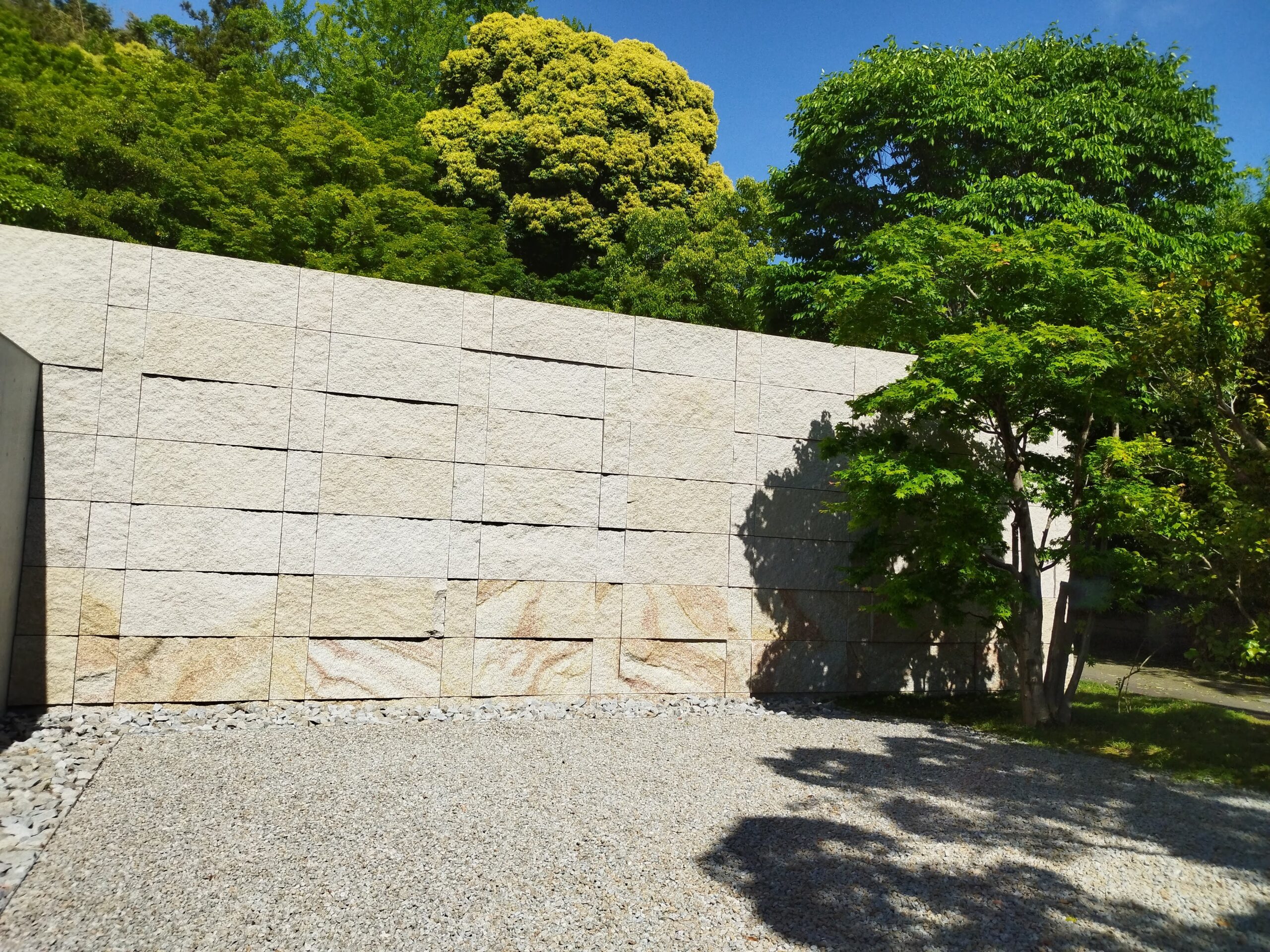本ブログは観光業、企業接待、留学生対応等で英語案内が必要ながら、多忙で準備に時間をかけられない方々の為にすぐに使える情報を分かりやすく解説しています。
👉タイトルの各語について:①掛け軸→”a hanging scroll ” 、➁図形→”a figure”、③○△□→”a circle (○), a triangle (△), and a square (□)”、④真意不明→”remaining unresolved”、⑤禅問答→”Zen questions and answers”ということが可能です。
今回は本編ブログ《鈴木大拙》の《2.インバウンドの視点!笑いが取れるかも?>Q3 この掛け軸に描いてある○△□はどんな意味ですか?》のA級者用(日→英の対応が必要な方)向け演習《Dツール》です。
👉ショートカット&リンクについて!①最初に音声で学習されたい方はそのままお進み下さい。➁最初に原文を確認されたい方は【原文:日英】へ。③本編ブログを参照されたい方は『鈴木大拙館:わかりやすく解説』へ。④音声ツールの概要を参照されたい方は『演習ツール』まで!
2.インバウンドの視点!笑いが取れるかも?
Q3 この掛け軸に描いてある○△□はどんな意味ですか?
”What do the ○△□ on this hanging scroll mean?”
Dツール:”日⇒英”演習簡易ツール
本ブログ同様、全15文は前半真面目パート(1-7)と後半おふざけパート(8-15)の2部構成になっています。また日本語だけ演習向けに(不自然にならない範囲で日英の語順を合わせる様に)編集しています。
D1:日英確認用:『日本語』”英語”対訳
👉文単位で日本語の後に英訳が續きますので、内容の確認ができます。
D2:口頭即訳用:『日本語』のみ(ポーズ間に英訳)
👉各日本語文の後はポーズになっていますので、その間に英訳できます。
D3:リピーティング用:”英語”のみ(ポーズ無し)
👉英語音声のみが(ポーズなく)続きますので復唱ができます。
D4:内容チェック用:”英語”のみ(低速版:or同通演習用)
👉英語音声(ポーズなし)を低速版で復唱or同時通訳の演習ができます。速さは約120wpm(約85%低速版)です。
【原文:日英】
- この掛け軸の絵は大拙の直筆ですが、この図形○△□自体は彼のオリジナルではありません。
- This drawing on the hanging scroll is by D.T.’s hand, but the figures—a circle (○), a triangle (△), and a square (□)—are not his original creation.
- 元々これが描かれたのはサムライ時代の画家でもあった禅僧によるもので、色々な意味で解釈されていて真意不明のままなのです。
- Originally, this was painted during the samurai era by a Zen monk who was also a painter, and it has been interpreted in many ways, with its true meaning remaining unresolved.
- 禅が説くところの基本は言葉で教えるのでなく、人々に自ら真実を悟らせるというもので、しばしば使われるのが伝統的手法である禅問答です。
- Zen teaches the principle of not using words to instruct, but instead letting people realize truths by themselves, often using the traditional method of Zen questions and answers.
- その狙いは人々に自ら考えるように促し真実を見出させることで、色々な答えのない公案を提示するわけですが、この絵も禅問答の一つと考えられています。
- The aim is to encourage people to think independently and discover some form of truth by presenting them with various riddles that have no clear answers, and this painting is considered an example of a Zen question and answer.
- 大拙はこれを宇宙を表現していると解釈し、掛け軸以外でも色々な場所で言及しています。
- Daisetz interpreted this as a representation of the universe and referenced it in various places beyond just hanging scrolls.
- 彼によると「○」は無限、「△」は「全ての元」、「□」は△を2つ重ねたものなのです。
- According to him, the circle (○) represents infinity, the triangle (△) is the source of everything, and the square (□) is formed by two triangles (△) stacked together.
- 彼の解釈は宇宙は無限に続くこれら三角形の合体プロセスで、無数の事象に連なるというもの。
- His interpretation is that the universe is an endless series of these stacking processes with triangles, leading to an infinite array of events.
- でも私達の様な俗人には、このような、難解な禅問答には遠く理解が及びません。
- But for laymen like us, such esoteric Zen questions and answers are far beyond our comprehension.
- もしかして、多くの人は特にお腹が空いている時、連想するかもしれないのが「○△□」を串に刺したおでん(日本の野菜の煮物)です。
- Perhaps many people, especially when they are hungry, might associate oden, traditional Japanese simmered vegetables, with this figure—○△□—on a skewer.
- 日本のある有名なアニメでは特徴的なキャラクターがいて、この串刺しおでんをいつも持ち歩くのです。
- A famous Japanese anime features a character who always walks around with this skewered oden.
- ○は輪切りの大根か、茹で卵に見え、△はこんにゃくに、□はかまぼこの様に見えます。
- The circle (○) looks like a sliced radish or boiled egg, the triangle (△) looks like konjac (Devil’s Tongue), and the square (□) looks like kamaboko, a fish cake.
- こう思えませんかね?○は無限に終わらない食欲を表し、△は食の基本を構成する、日々の試食の様なもの、って。
- Can we assume that the circle (○) represents the never-ending appetite, and the triangle (△) constitutes the basis of food, like trial tasting in daily life?
- この□は文字通りまともな食事(square meal)の意味のように見え、それが出来るのは、延々と繰り返し続く試食によって、です。
- The square (□) literally seems to mean ‘square meals,’ decent meals that can be completed with repeated, everlasting trial tastings.
- その無欲の禅僧がその図形から宇宙を連想するのと我々凡人が食欲を思い浮かべるのとはあまりに対照的ですね。
- The ascetic Zen monk who associates the figure with the universe is in stark contrast to us mere mortals who associate it with our appetites.
- でも美味しく食べた後は、勿論、そこには何も残らないので、我々だって禅の理想の世界、「無」、を実現できているのかも!
- But after eating delicious meals, of course, there is nothing left afterward, so we may be able to achieve the Zen ideal of ‘nothingness’!
Glossaries(用語集)
他でも使える日常用語を抜粋しました。可算名詞で冠詞がないものは複数表現です。
★hanging scroll(掛け軸)★remaining unresolved(意味不明)★Zen questions and answers(禅問答)★ a representation of the universe(宇宙の表現)★infinity(無限)★stacked together(一緒に重ねられて)★an infinite array of〜(〜の無限の連なり)★laymen(俗人) ★esoteric Zen(難解な禅) ★far beyond one’s comprehension(到底理解できない)★square meals (まともな食事)
御礼🔶後書き
🔶今回も最後まで読んで頂き大変ありがとうございます。もし何かご意見やリクエストございましたらお気軽に『Help Desk』にてお声がけくださいませ。Gold🔶v.3a.2a.1a


